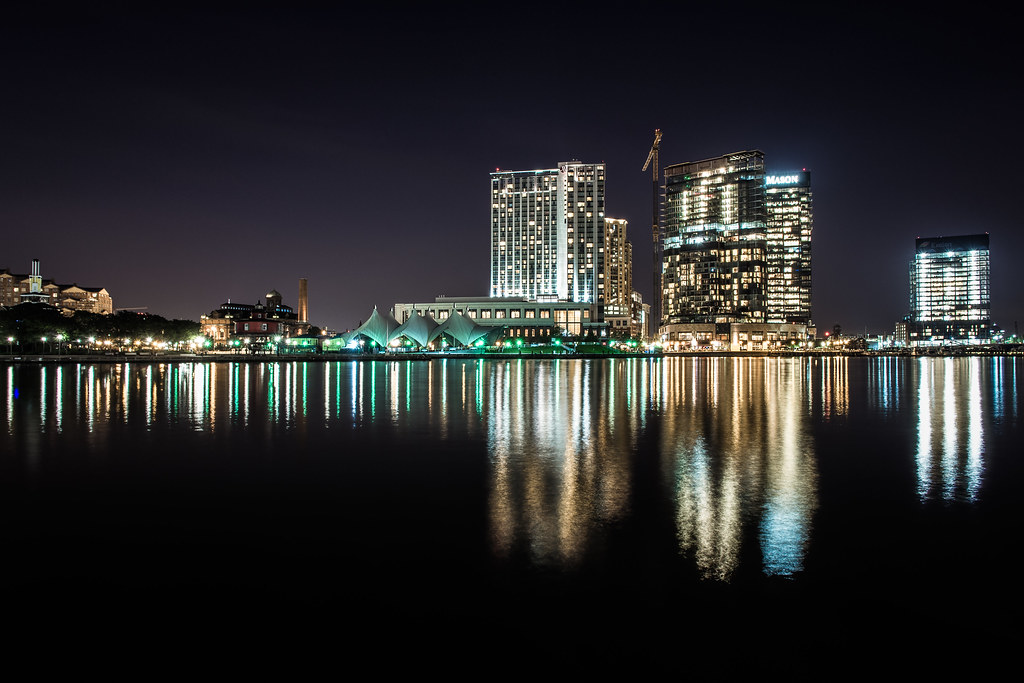 |
| Olympus EP5 with M. Zuiko 45mm f/1.8, 4" at f/5.6 and ISO 200. |
Photo work has slowed down a ton in the last couple weeks. Not that there haven't been jobs in my queue, but scheduling them has been a pitfall what with the month's inordinate quantity of rainfall and folks simply getting an early start to their Summer vacations. It's worked out quite lovely, actually, affording me some long overdue time to shoot creatively on my own time and play with techniques I simply haven't had sufficient time to explore.
As of late, I've been an enormous fan of composite stills frames. I demonstrated the method earlier in the year with something of a rough how-to post, but this past week I found myself exploring the method in other scenarios (not just smoothing out water) and seeing just how far it would allow me to push an image before it broke down from a data standpoint. Much like long exposure work, the time investment involved has made me slow down, and it's been resulting in images I quite like.
I'll start with the negatives in my composite practice. I thought the method might work wonders for scenes including people and cars in motion, producing either a similar effect as traditional long exposures or otherwise presenting as smooth motion blur in the same way. I was pretty wrong in that assumption. When the shutter speed is too high, the result ends up being multiple copies of the subject stacked on top of itself when that subject is in motion, with no smooth blurring, and even when the shutter speed is low enough to create that blur (such as with cars at night), there are too many ugly repeating patterns that ruin the effect. Different smart object staking modes may help make a smoother, watery effect of cars and people, but those repeating patterns are an image killer to my eye.
More importantly, however, my experiments with composite work were intended to test image fidelity, and therein lay the positives.
 |
| Olympus EP5 with 45mm f/1.8, 1.6" at f/5.6 and ISO 200. |
Most samples I produced were taken with the time lapse feature intervalometer, set up to take 10 frames with settings locked down either in manual or by AE lock. Per theoretical math, 10 frames stacked shot at ISO 200 produces the equivalent of an ISO 20 image, which in truth is probably a bit overkill (and if you go by DXOMark's measured ISO values, it's actually more an ISO 10 image). But, overkill or not, it's a remarkably clean look, with refined edge lines and genuinely noise free areas of flat color and tone. And sometimes that kind of overkill cleanliness in an image is something you're looking for.
 |
| Olympus EP5 with 45mm f/1.8, 1/10" at f/5.6 and ISO 200. |
As an aside, I've enjoyed using the EP5 with my little trio of M. Zuiko primes once again. After sitting on my hands for nearly a year, I sent my grossly out of spec 12mm f/2.0 in for service through GetOlympus it's back to working like a beauty (seriously, thank you to Olympus for having such keen service available in my region through Precision Camera, those guys are great). There's just no getting around it for me, even with a complete kit of pro zooms and the EM1 available, I'm a prime shooter, and more than that I'm a minimalist. A small camera with a small subset of focal lengths I like to use will always satisfy me more than the admitted versatility and flexibility of a larger system. And, ultimately, that's okay. Still need the pro kit for the working stuff anyway, so going that direction last year was not a mistake or waste.
 |
| Olympus EP5 with 12mm f/2.0, 3.2" at f/5.6 and ISO 200. |
This afternoon I'm making a trip down to Shenandoah National Park with Rob and we aim to hike and shoot landscapes and, when the sun goes down, try to capture some Milky Way in the night sky. We'll see how far our stamina takes us. Should be a fun Sunday.


No comments:
Post a Comment